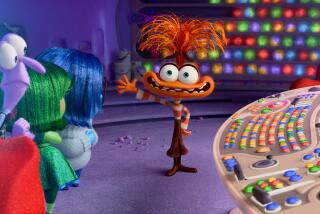NOSTALGIA
- Share via
Movie theaters these days divide and subdivide about every two seconds, like hyped-up amoebas. Soon they will be so small, a family of four will have to go in shifts. But don’t despair, because hey, hey, hey, the drive-in’s back.
“People have rediscovered them,” says Milt Moritz, vice president of Pacific Theaters--which, with 65 locations is the largest operator of drive-ins in the state. “If you want to smoke, you can smoke. If you want to talk, you can talk. Senior citizens like the privacy of their cars--they can turn up the sound. If the kids cry or fall asleep, the parents can still see the film.”
The drive-in era peaked in 1958, when 4,063 drive-ins (of 16,354 total theaters) flickered across the country. Today, drive-ins account for only 910 out of 23,814 screens. Not surprisingly, California has the most of any state with 156; Ohio trails far behind in second with 60. It’s easy to see why the numbers have dropped. Even multi-screen drive-ins, which are generally profitable, are not the most lucrative of land developments. But the $7.50 admission price of walk-in theaters may put the drive-in back in business. Drive-ins are cheap: Adults get in for about $4 and children get in for free. And gone are tinny, window-mounted speakers. Today, there’s “Cine-Fi Sound”: Clamp-on wires that attach to car antennae pump soundtracks through auto sound systems. And refined projection systems project more brilliant images. Then there’s the social side of drive-ins. Some have playgrounds, and almost all offer real food: burgers, pizzas and burritos, as well as popcorn.
“People come early,” says Moritz. “They come in a half-hour or hour before the picture, have their dinner, meet their families and friends. It’s a real outing, a gathering place. You’ll always have drive-ins.”
More to Read
Only good movies
Get the Indie Focus newsletter, Mark Olsen's weekly guide to the world of cinema.
You may occasionally receive promotional content from the Los Angeles Times.








